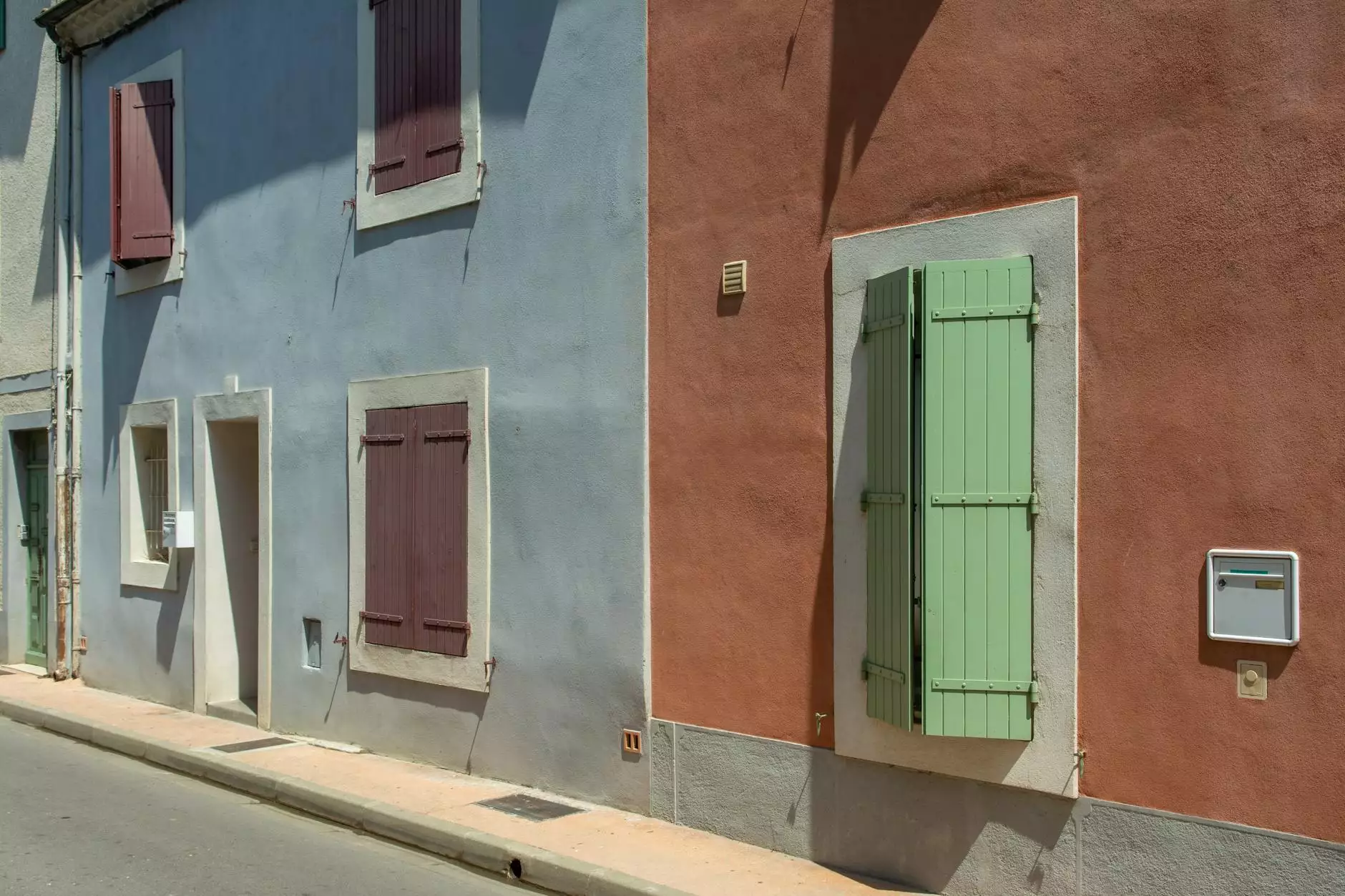The Ultimate Guide to Window Blind Shutters: Transform Your Home with Style

When it comes to enhancing the beauty and functionality of your home, few elements hold as much power as window blind shutters. These versatile window treatments not only provide privacy and light control but also add a unique architectural element to your decor. In this comprehensive guide, we will explore everything you need to know about window blind shutters, from selecting the right style to installation and maintenance tips.
1. Understanding Window Blind Shutters
Window blind shutters are hard window coverings typically made from materials like wood, composite, or vinyl. They consist of horizontal or vertical slats that can be adjusted to control light and airflow while providing privacy. Unlike traditional curtains, shutters give a timeless and elegant look to any room.
1.1 Benefits of Window Blind Shutters
- Light Control: Easily adjust your shutters to let in as much or as little light as you desire.
- Privacy: Close the shutters completely for total privacy without sacrificing style.
- Energy Efficiency: Shutters provide an extra layer of insulation, helping to keep your home warm in the winter and cool in the summer.
- Durability: High-quality shutters are built to last, resisting warping and fading over time.
- Enhanced Curb Appeal: Installing shutters can significantly boost your home’s exterior appeal, adding value to your property.
2. Different Styles of Window Blind Shutters
When choosing window blind shutters, one of the first considerations is the style that best matches your home’s architecture and your personal taste. Here are some popular styles:
2.1 Plantation Shutters
Plantation shutters are characterized by wide slats and are often used in southern-style homes. They provide a classic look and are excellent for controlling light and airflow.
2.2 Café Shutters
Café shutters cover only the lower half of the window, allowing natural light to flood in while providing privacy for the lower sections. They are perfect for kitchens and living areas.
2.3 Full-Height Shutters
Full-height shutters cover the entire window, making them suitable for bedrooms and living rooms where complete privacy is desired. This style gives a cohesive look to the room.
2.4 Tier-on-Tier Shutters
Tier-on-tier shutters consist of two separate panels that can be operated independently. This allows for ultimate versatility in light control and privacy.
2.5 Solid Panel Shutters
Solid panel shutters are perfect for homeowners looking for maximum privacy and light blockage. They offer a sleek look and can enhance the insulation of your windows.
3. Choosing the Right Material for Your Shutters
The material you choose for your window blind shutters can significantly impact their appearance, durability, and insulation properties. Let’s explore some of the most common materials:
3.1 Wood Shutters
Wood shutters provide a natural aesthetic and can be stained or painted to match your décor. They are lightweight and offer great insulation but require regular maintenance to protect against moisture and warping.
3.2 Composite Shutters
Composite shutters are made from a combination of materials designed to mimic wood. They resist warping and fading, making them an excellent choice for high-humidity areas like bathrooms and kitchens.
3.3 Vinyl Shutters
Vinyl shutters are affordable and require minimal maintenance. They are durable and resist fading, making them suitable for both indoor and outdoor applications.
4. Installation of Window Blind Shutters
Installing window blind shutters can seem daunting, but with the right tools and a little patience, it can be a rewarding DIY project. Below are the steps to guide you through the installation process:
4.1 Measuring Your Windows
Accurate measurements are crucial for a successful installation. Measure the width and height of the window frame, ensuring you account for any obstructions.
4.2 Selecting the Mounting Type
Decide whether you want an inside mount or an outside mount. An inside mount fits inside the window frame for a clean, built-in look, while an outside mount extends over the window frame for added height and light blockage.
4.3 Preparing for Installation
- Gather the necessary tools: drill, screwdriver, level, measuring tape, and brackets.
- Follow the manufacturer’s instructions for the specific type of shutter you’ve purchased.
4.4 Installing the Shutters
Begin by attaching the mounting brackets according to your measurements. Then, insert the shutter panels into place, ensuring they fit snugly and operate smoothly. Use a level to confirm they are straight.
5. Maintaining Your Window Blinds
To ensure your window blind shutters remain functional and beautiful for years to come, proper maintenance is essential. Here are some maintenance tips:
5.1 Regular Cleaning
Dust your shutters regularly using a microfiber cloth or a duster. For deeper cleaning, you can use a damp cloth with mild soap, but be sure to follow up with a dry cloth to avoid moisture damage.
5.2 Inspect for Damage
Periodically inspect your shutters for signs of wear, such as loose slats or cracked panels. Addressing any issues early can prevent more extensive damage and costly repairs.
5.3 Repainting or Restaining
If your wood shutters start to fade or wear, consider repainting or restaining them to restore their original beauty. Make sure you use products suitable for the type of wood.
6. The Cost of Window Blind Shutters
The cost of window blind shutters can vary widely based on factors such as material, style, and size. Here's a rough breakdown of what to expect:
- Vinyl Shutters: Generally the most affordable option, they can range from $15 to $45 per square foot.
- Composite Shutters: These typically range from $30 to $60 per square foot.
- Wood Shutters: The price for wood shutters can range from $50 to $100 per square foot or more, depending on the type of wood and customizations.
7. Where to Buy Window Blind Shutters
When shopping for window blind shutters, you have a variety of options available:
7.1 Online Retailers
Many online stores offer a wide range of styles, materials, and prices. Websites like janelashutters.co.uk provide custom options to fit your specific needs and preferences.
7.2 Home Improvement Stores
Local home improvement stores often carry a selection of ready-made options that you can purchase and take home the same day. This is a convenient choice for those who prefer seeing products in person.
7.3 Custom Shutter Companies
For a truly unique look, consider hiring a company specializing in custom shutters. They can provide tailored solutions that perfectly fit your windows and design style.
8. Conclusion: Elevate Your Home with Window Blind Shutters
In summary, window blind shutters are more than just a functional window covering; they are a beautiful addition to any home. By understanding the various styles, materials, and benefits, you can select the perfect shutters that will enhance your living space. Whether you choose to install them yourself or hire a professional, the impact of shutters on your home's aesthetic and comfort cannot be underestimated.
Consider exploring the stunning selection available at janelashutters.co.uk to find shutters that will transform your home into a stylish retreat.









